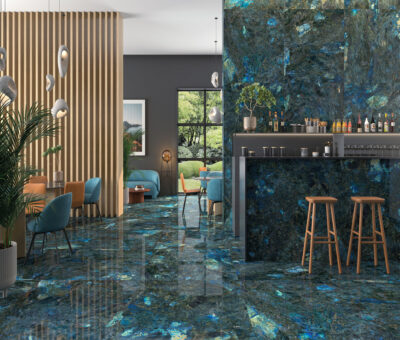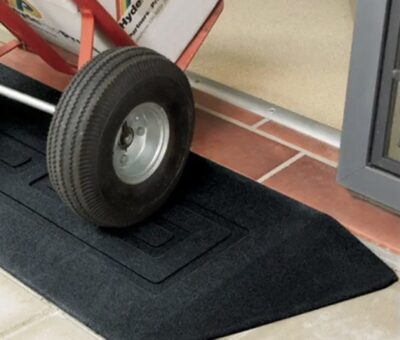Italtile: Proportion + Scale + Size = Balance
Pinterest, Instagram and all our gorgeous lifestyle mags have us falling in lust with incredible rooms, extraordinary coordinated décor and all-round elegantly lush living ideas. But translating these dreams into reality in our own homes can be more than a little challenging.
Get the scale, proportion and size right, and everything sings in glorious harmony. Get it wrong, and everything screeches at you. Or else, even worse, everything is silent. Nothing says a word. And the awful realization dawns that you’ve created such an incredibly polite interior (or exterior) that everything just spends its entire time apologizing for existing, instead of taking up space in a beautiful and conscious way.
So how does one find that magical balance? How can we all create an environment that’s a good vibrational match with our personalities? Italtile has handed these questions over to design diva Melanie Ewing of Chapters Interiors. Here she helps unpack the mysteries of size, scale and proportion to help you find balance and harmony in your home design.
Q: What’s size, scale and proportion all about?
A: This is a great question to begin with. For a start, most people don’t know the difference between scale and proportion, or assume they are the same thing. So
let’s start with the basics. Size refers to the physical dimensions of an object. Scale is the relative size of different objects in relation to each other or a common standard. Proportion is the harmony of scale. All three are naturally interrelated concepts and all three should be considered when doing anything design related.
Q: I have inherited a number of antique coffee tables and side tables of different sizes, but I already have a coffee table and side tables! How can I incorporate them into my home without creating clutter?
Alas, sometimes we are all victims of the notion of sentimentality, even when it comes to furniture, and we hold onto things we don’t need. As hard as it may be, you need to put any notions of sentiment aside in this process or you may end up with a mish mash of styles and an overcrowded space. Too much noise! Have a look at all the pieces from two points of view: function (how many do you need for the space to be functional to your needs) and form: which ones are your favorites or appeal to your sense of style. And then let go of the rest – rehome, donate and recycle. Too many pieces will make a space look cluttered and lacking in plan and purpose.
Q: High ceilings and low ceilings and curtains. What’s the best way to hang curtains to suit?
Low hung curtains in a space with high ceilings will look out of proportion and create a visual disruption. The top line of the curtains will create a ‘cut’ through any vertical, graceful lines created by the high ceilings, and look messy. (there’s that screechy noise again!) Always hang curtains as close to the ceiling as possible. This will emphasize the height of the high ceilings and create a clean, classic, well-proportioned line that draws your eye upward.
Q: We’re building, so we think it’s a good time to get a new dining room table. Should we design around the table I choose, or should we choose the table to fit into the room. How do we get the proportion right?
Neither – rather start with considering what your needs. A family of two versus a family of eight have very different space needs in a dining space. Someone who never entertains versus someone who loves to throw large dinner parties has very different seating and space requirements. The same with families who enjoy more formal seating arrangements at mealtimes versus folk who sit in the kitchen at an island on barstools. So, consider your lifestyle needs and this will inform the size of the table you will need, which will in turn inform the size of the room.
Q: What is negative space? It sounds like a bad thing?
Negative space ironically is a very positive thing in interiors. Every area needs negative space in order for it to function, to offer visual balance as well as to zone spaces. Negative space will highlight and showcase everything around it by giving the eye a place to rest and appreciate the elements of positive space. Balance and composition are the keys here!
Q: I’ve got really big sofas and we’re moving into a much smaller home. Can I make my big pieces look good in a small space?
You have a couple of options in this situation, if you don’t want your space to look crowned and cramped. Consider selling your existing furniture and getting more size-appropriate pieces. Alternatively, only use some of the pieces you have (the ones that work best with the new space). And lastly, you could reupholster or paint pieces of furniture to be as close as possible to the colour they are placed In front of – this will create the illusion of space.
Q: My bedroom has unusual round windows. How can I take that shape into the rest of the room? Or should we break out the windows? Help!
What a lovely architectural feature to have! So no, don’t destroy them, use them to your advantage. The best way to make the most of the unique shape is the design principle of repetition: repeat the shape subtly in the space to create a sense of cohesion. Round mirrors, round bedside pedestals, round scatter cushions, circular, curving patterns on bed linen – these will all repeat the shape subtly and make the room feel more ‘pulled together’.
Shop the trend:
Speaking of lovely round things, check out these gorgeous spherical micro mosaics here.
Q: We have a tiny guest bathroom that we want to ‘zhuzh up’.
But I have no idea how to tile it. I guess small space, small tiles?
You could use small tiles, I guess. Or you could go big, go bold, go wild, go colourful – in a space that will have everyone talking about your creativity. Guest bathrooms are a great opportunity to get creative ideas out of your system, wow both your guests and yourself, and splash those creative juices all over every surface.
Shop the look:
If you decide to keep it petite, consider these mini subways.
Modern living means smaller spaces, and smarter solutions are needed for bathrooms with less legroom…. Shop Compact Basins or a range of Vanities from Italtile: Double {XL} , Small; or 2m Shower Screens.
Q: We’re moving from a big garden house to a small garden house. Should we leave our big pots behind?
Pots are a great way to create structure and form in a garden. Depending on the garden and the style of pots – the principle of proportion can be a little more forgiving in green spaces so I wouldn’t get rid of them just yet. Pots are also an opportunity to bring in greenery if you are wanting to become more water-wise and do away with grass. Take all the pots with you and play around in the space. Once you have got the composition right, consider gifting a friend with the left-over pots and planting the contents.
Q: We decided to paint all our walls white because I heard this opens up a room. But now it all just looks stark and dull. What can I do now?
Texture is the answer to your woes! Flat, white surfaces can sometimes come across as stark, clinical and cold, so by adding texture, even in shades of white if you are leaning towards the all-white look, you can create a showstopping space. Texture creates visual interest, a sense of warmth, and can be incorporated into wall and floor tiles, wallpaper, fabrics and textiles, trims and surfaces.
Q: Matching lounge suite vs different pieces? What’s best to get good balance?
This would depend on your personal style as well as the style of the space. A more structured interior (and occupant) would lend itself to matching furniture, while a more eclectic personality (and space) would be better suited to mixing and matching. Always think about how you want the space to feel – structured, casual or anything in between – and use that as your guide on how to match (or mis-match) your furniture.
Q: I have fallen in love with large format tiles, but I have a very small apartment. Will they work in my space or is it a dream?
Definitely not a dream. In fact, large format tiles are great for smaller spaces as you will have less grout lines. The fewer grout lines you have, the greater the sense of spaciousness. So, in fact, having large format tiles will make the space feel larger.
Shop the XXL look.
For more visit Italtile.
You might also like...
-
Making a Statement: Tile Trends Redefining Design in 2024.

The design landscape of 2024 is marked by a striking trend that takes tile and flooring to the forefront of interior aesthetics – the era ...
-
Embrace Love in Every Hue with Stiles.

As Valentine’s Day approaches, love is in the air, and what better way to celebrate than by infusing your living spaces with warmth, intimacy, and ...
-
Overcoming Obstacles: The Benefits of Installing Threshold Ramps.

Installing threshold ramps is an essential and transformational component of accessible living. These often-underestimated additions play a vital and multi-faceted role in improving mobility and ...
-
Rich Classic Flooring – The New Reality

“All the look and feel of natural timber with none of the disadvantages”!! Incredibly beautiful new decors and finishes recently introduced to the Tru-Wood ...































